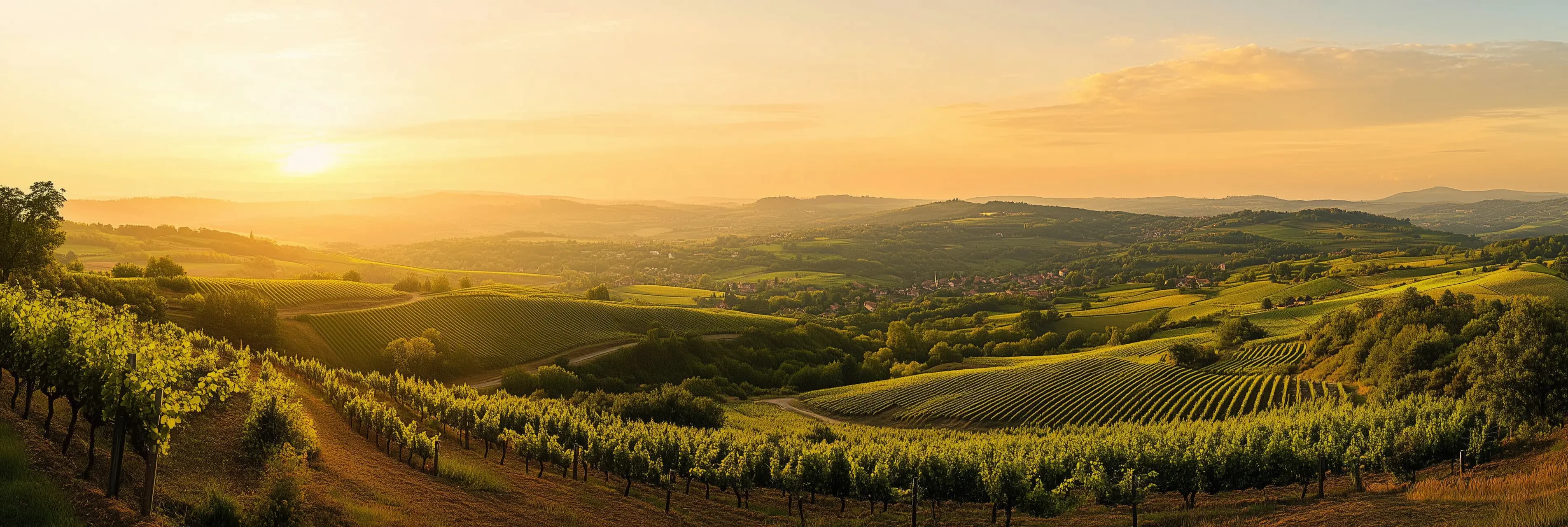A new chapter for Beaujolais wines that inspire
Beaujolais, a region historically tied to its youthful Beaujolais Nouveau, is undergoing a renaissance. The wine is regaining prominence not only in France but also internationally. This renewed vitality is thanks to a new generation of winemakers and innovative strategies that position Beaujolais as a symbol of craftsmanship and quality.
From folklore to orestige: a changing image
For years, the festive spirit of Beaujolais Nouveau has overshadowed the exceptional quality of the region's 10 crus, such as Morgon, Fleurie, and Moulin-à-Vent. However, the perception of Beaujolais is shifting. Today, it graces Michelin-starred tables, appears in popular American TV shows like Shrinking, and continues to attract both younger and older wine enthusiasts.
“We are witnessing the end of wine without emotion. A great bottle tells a story: the winemaker’s care, the terroir, and the craftsmanship.” - Jean-Marc Lafont, president of Inter Beaujolais
The key to the revival: a 20-year effort
This transformation is no accident. Over the past two decades, winemakers have worked tirelessly to elevate the region’s reputation.
Focus on quality
Producers emphasize low-intervention and sustainable practices, often leaning into organic and natural wine trends.
Export expansion
With markets in Northern Europe, South Korea, Australia, and the U.S., Beaujolais has solidified its international presence. Jean-Marc Lafont remarks, “To thrive, at least 50% of our production should be exported.”.
Spotlight on the new generation of winemakers
Beaujolais owes much of its revival to its talented and ambitious young winemakers. Among them:
- Mathieu Verchère (Saint-Lager): Renowned for stunning Brouilly and Morgon wines.
- Yann Bertrand (Fleurie): A star in natural winemaking circles.
- Thillardon Brothers (Chénas): Leading the charge with expressive, terroir-driven wines.
- Laura Lardy and Élisa Guérin: Representing a wave of innovative female winemakers.
This new energy is further bolstered by accessible vineyard prices and alternative ownership models like cooperative initiatives and vineyard leasing, allowing more young talent to enter the industry.
Beaujolais on the global stage
Despite challenges like climate change and market competition from countries like Italy and Spain, Beaujolais holds its ground. Interestingly, the U.S. market remains resilient—even during periods of high import taxes—thanks to the wine’s affordability and charm.
Beaujolais winemakers are not content to rest on their laurels.
Efforts are underway to classify certain lieux-dits (specific vineyard plots) in Fleurie, Brouilly, and Moulin-à-Vent as premiers crus. Although the recognition process will take years, it signals a strong commitment to showcasing the region’s exceptional terroirs.
The renaissance of Beaujolais is a testament to its resilience and ability to adapt. While remaining rooted in its traditions, the region embraces innovation, quality, and storytelling. The future looks bright for Beaujolais as it continues to charm wine lovers around the globe with its character, accessibility, and undeniable heritage.

